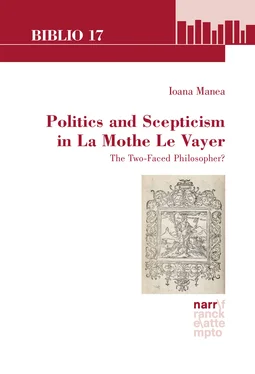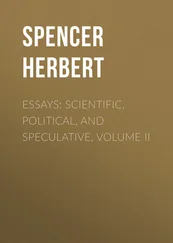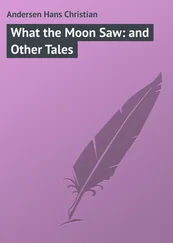Mais comme l’on trouve beaucoup de contes fabuleux dans cette sorte de lecture, aussi faut-il avouer, qu’il n’y en a point de plus instructive, ni de plus digne de nous, puisque nous ne sommes au monde, que pour en contempler les merveilles, qui ne se voient nulle part ni en si grand nombre, ni si bien expliquées que dans ces livres de voyages […]17
The reason why the travel accounts are a major source of wonder comes from the change of scenery that they bring about. This is the result of the fact that, even if they are genuine and not invented, they depict phenomena, which their readers, who are unaccustomed to them, find outstanding or strange (“étrange”). Synonymous with the extraordinary, the strange is related to the incomprehensible which is an essential part of “wonder” (“merveille”), as it is defined by Furetière’s Dictionnaire universel : “a rare, extraordinary, surprising thing, which can hardly be understood” (“chose rare, extraordinaire, surprenante, qu’on ne peut guère comprendre”).18 The strangeness of the phenomena described by the travel accounts may arouse the admiration that is connected to the fact of wondering. Despite being accessible to everyone, the wonders are likely to provoke especially the philosophers’ interest. When talking about the philosophers’ role in the world, La Mothe Le Vayer argues, through the voice of his character Hesychius from the Dialogue sur le sujet de la vie privée , that “they prevent the wonders of the Almighty and of nature from remaining without witnesses, interpreters and admirers” (“Ils empêchent que les merveilles du Tout-puissant et de la Nature ne demeurent sans témoins, sans interprètes, et sans admirateurs ”).19 Thanks to their capacity for reflection, philosophers are gifted with a particular sensitivity to understand the extraordinary character of phenomena behind which, according to ordinary perception, the presence of the divinity can be guessed. Hence, the philosophers fulfil a triple mission, which consists in looking at the show of nature, distinguishing its prodigious aspects and treating them with the admiration that is convenient for them. Wonderment or the ability to seize and to admire what is out of the ordinary is the very attitude that produces and nourishes philosophy.20 The capacity to detect the otherness that is to be found within the world is inseparable from the knowledge, which is the field of philosophy.
While the geographical discoveries and the travel accounts that they flesh out give rise to the admiration for the big universe of the globe, the anatomical discoveries are likely to give birth to the admiration for the small universe of the body. By taking advantage of a well-known correspondence, La Mothe Le Vayer argues, by means of his alter ego Tubertus Ocella, that the “microcosm” formed by the human body is at least as worthy of being the topic of philosophical meditations as the macrocosm or the earth globe, which supports the “theory of the big” (“la théorie du grand”). Acquired thanks to “so many exact and curious dissections of the human body” (“tant d’exactes et de curieuses dissections anatomiques du corps humain”), the “modern knowledge” (“connaissances modernes”) in the field of medicine has no reason to be envious of the geographical discoveries, which moreover they exceed in utility.21 Following the example of the geographical discoveries that improve the science on which the “map of the world” (“mappemonde”) is based, the anatomical discoveries improve humankind’s knowledge about the human body and, naturally, about itself. In the case of the anatomical discoveries, just like in the case of those made in the field of geography, La Mothe Le Vayer takes sides for the Moderns against the Ancients. For instance, the demonstration of the circulation of the blood, whose true source is the heart, reveals the vast number of blunders that have been made in the past and avoids similar mistakes in the future.22
Starting from the newly acquired anatomical knowledge and its methods, La Mothe Le Vayer expresses, through the voice of his character Xilinus, hypotheses which lead to an admiration that may be close to the one raised by the phenomena depicted by the travel accounts:
it has always seemed to me that if it could be well dissected, the smallest mite would be able to provide no less reasons for admiration than what we find in our human factory and maybe even more, if we take into account all the activities of nature contained in such a small place, which may be said to be a masterpiece of this same nature.
il m’a toujours semblé, que le moindre ciron, s’il se pouvait bien anatomiser, ne fournirait guère moins de sujets d’admiration que nous en trouvons dans notre fabrique humaine, et peut-être davantage, considérant tous les mouvements de la nature, renfermés dans un si petit lieu, ce qui peut passer pour un chef-d’œuvre de cette même nature.23
Despite the privileged place that it is said to hold in the Christian universe, humankind is not the only one who deserves admiration. By mentioning the structure of the mite (“ciron”), supposed to be admirable because of the concern for detail that it shows, La Mothe Le Vayer does not draw inspiration only from the concrete anatomical discoveries carried out at the time, but also from the Augustinian thought on the infinitely small and the infinitely great which, however, he does not mention openly. According to the bishop of Hippo, for those who are able to perceive it, the power of God can be admired at the level of both the vastness and the smallness of the universe.24 As far as he is concerned, La Mothe Le Vayer also alludes to the author who is behind the construction implied by the meaning of the “factory” (“fabrique”). But beyond bearing witness to its creator, what matters is the structure of the mite which, for the philosopher’s sensible eye, is likely to question the way in which the individuals tend to rank beings. It is precisely because of the smallness that may make it seem insignificant but which actually makes the organisation of its organs even more remarkable that the mite is even worthier of admiration than humankind, who is usually placed at the top of the hierarchy. Filled out by imagination, the curiosity that animates philosophers does not meet the unfamiliarity which is intrinsic to the distance causing admiration only in the accounts about the faraway regions, but also in the phenomena which belong to ordinary reality.
1.3 Adversary of Curiosity for the Causes behind the Show Offered by the World
It is certainly natural to ask whether, as a convinced defender of curiosity, La Mothe Le Vayer also tries to grasp the causes of the phenomena that arouse his admiration. In this respect, he partly challenges the tendency of his time, which consists in going beyond the observation of natural phenomena in order to try to clarify their causes. As we have already seen, he is well aware of the latest scientific discoveries. Nonetheless, his rather dark view of the way in which God regards the knowledge searched for by humankind stops him from entirely accepting its results.
Concerning the existence of an author of the universe, for instance, he takes up an argument which had been developed during the polemic that opposed the Stoics to the atomists:
For Democritus who made fun of everything will allow us to make fun in our turn of his atoms, whose fortuitous meeting he held to have produced the world and everything it contains. Rather than that, I would believe that the alphabet letters shuffled in a bag and then thrown on a table could have composed by chance Homer’s Iliad or the most beautiful of Seneca’s tragedies.
Car Démocrite qui riait de tout, nous permettra de rire à notre tour de ses atomes, dont il voulait, que la rencontre fortuite eût produit le monde, et tout ce qu’il contient. Je croirais aussitôt, que les lettres de l’alphabet brouillées dans un sac, et puis jetées sur une table, auraient pu hasardeusement composer l’ Iliade d’Homère, ou la plus belle des tragédies de Sénèque.1
Читать дальше












